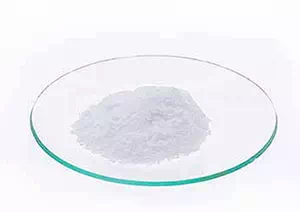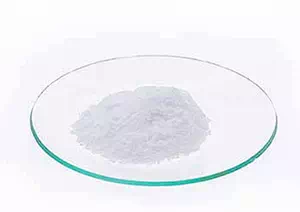All Categories


Malonic acid CAS 141-82-2, Malonic acid, CAS 141-82-2
Malonic acid (CAS 141-82-2), as a highly active dibasic acid, its core value lies in the activated methylene group in its molecule and its easy decarboxylation property, which supports key fields such as medicine (over 60% of its applications), industry (surface treatment/electroplating), and agricultural chemistry.
CAS : 141-82-2
Formula : C3H4O4
Mol. wt. : 104.06
EINECS : 205-503-0
| CAS | 141-82-2 |
| Molecular formula | C3H4O4 |
| Molecular weight | 104.06 |
| EIENCS | 205-503-0 |
| Form | Liquid |
| Melting point | 132-135 °C (dec.) (lit.) |
| boling point | 140℃(decomposition) |
| Density | 1.619 g/cm3 at 25 °C |
| Solubility | 1 M NaOH: soluble100mg/mL, clear to slightly hazy, colorless to faintly yellow |
| PKA | 2.83(at 25℃) |
| Color | White |
| Storage temp | Sealed in dry,Room Temperature |
Malonic acid (CAS 141-82-2), as a highly active dibasic acid, its core value lies in the activated methylene group in its molecule and its easy decarboxylation property, which supports key fields such as medicine (over 60% of its applications), industry (surface treatment/electroplating), and agricultural chemistry.
Environmental advantages: When used as an aluminum treatment agent, it decomposes without causing pollution, which is in line with the trend of green production.
The key to synthesis: In industry, the hydrolysis of cyanoacetic acid is the main method, and the risk of cyanide must be strictly controlled.
Safety reminder: Although it is of low toxicity, standardized operation is still necessary to avoid irritation and pay attention to the impact of environmental emissions.
Malonic acid (CAS 141-82-2), as a highly active dibasic acid, its core value lies in the activated methylene group in its molecule and its easy decarboxylation property, which supports key fields such as medicine (over 60% of its applications), industry (surface treatment/electroplating), and agricultural chemistry.
Environmental advantages: When used as an aluminum treatment agent, it decomposes without causing pollution, which is in line with the trend of green production.
The key to synthesis: In industry, the hydrolysis of cyanoacetic acid is the main method, and the risk of cyanide must be strictly controlled.
Safety reminder: Although it is of low toxicity, standardized operation is still necessary to avoid irritation and pay attention to the impact of environmental emissions.
Toxicity data:
Low toxicity: Oral LD₅₀ in mice is 1.54 g/kg, which is irritating to the skin and mucous membranes (weaker than oxalic acid).
Risk identification: Xn (Harmful), Xi (Irritating), Risk code R22 (Harmful if swallowed), R36/37/38 (Irritating to eyes/respiratory tract/skin).
Protection and storage
When operating, protective clothing and gas masks should be worn to avoid contact with skin and eyes.
Store in a sealed container in a cool and dry place, away from oxidants (which are prone to reactions).
Environmental risk:
The water body may have an acidified environment that affects aquatic organisms, and waste must be disposed of in compliance with regulations.
* Prompt reply and 24 hours online, professional team to provide best price and high quality product.
* Sample testing support.
* Every batch of products will be tested to ensureits quality.
*The packing also can be according the customers` requirment.
*Any inquiries will be replied within 24 hours.
*we provide Commerical Invoice, Packing List, Bill of loading, COA , Health certificate and Origin certificate. If your markets have any special requirements, let us know.